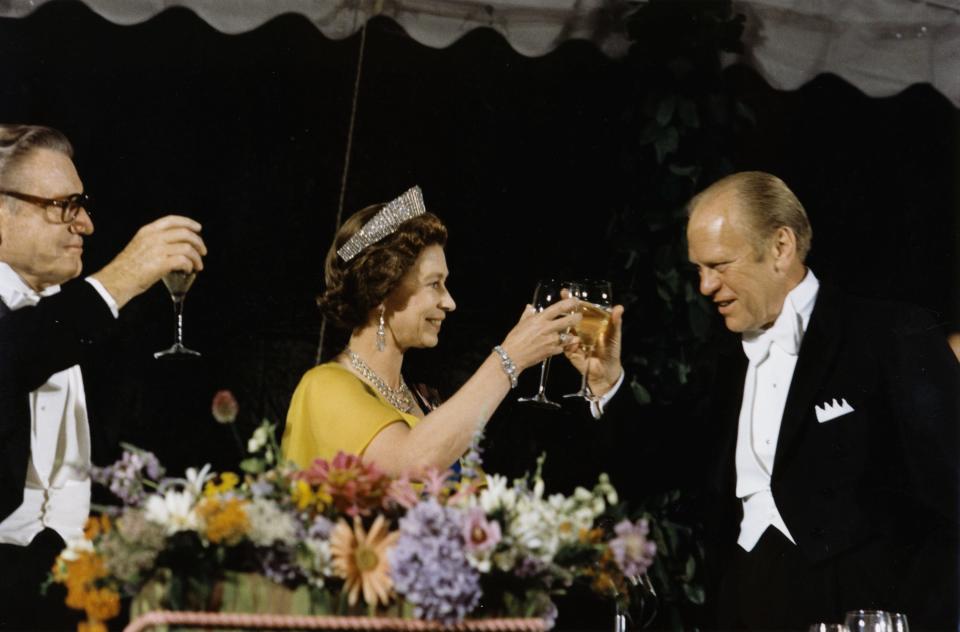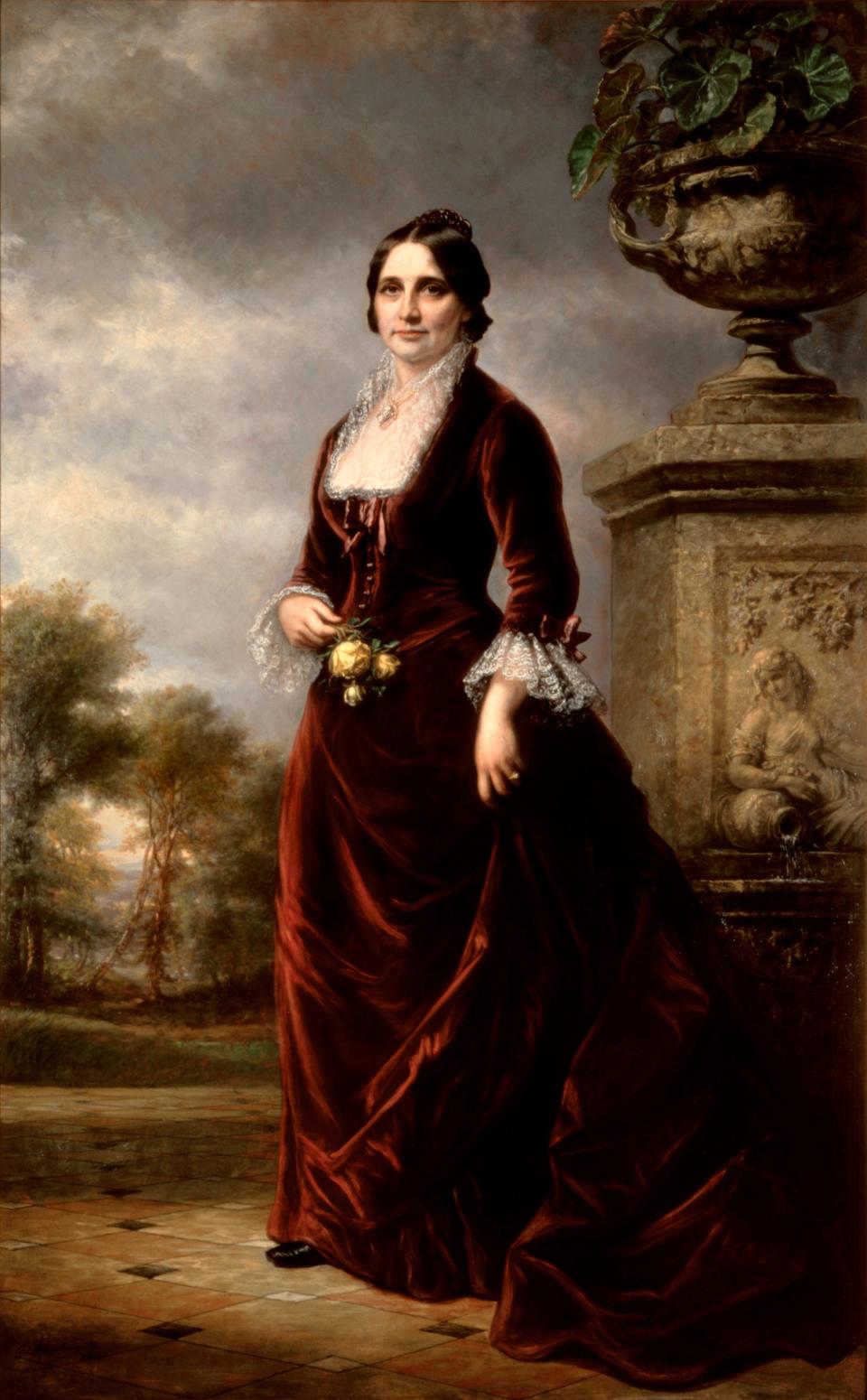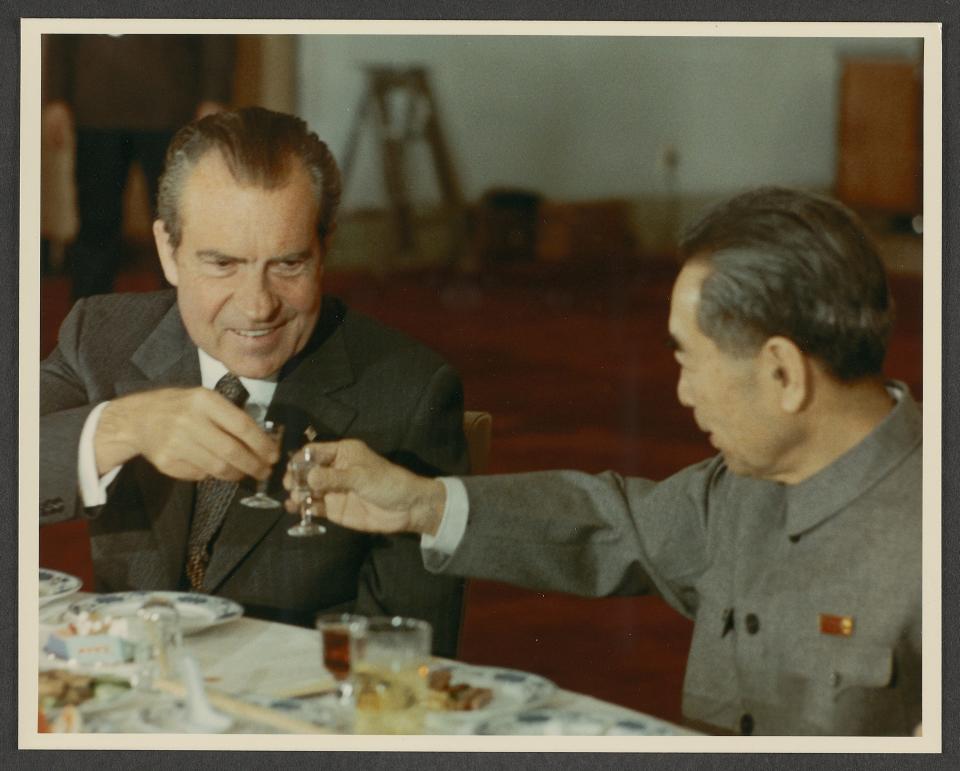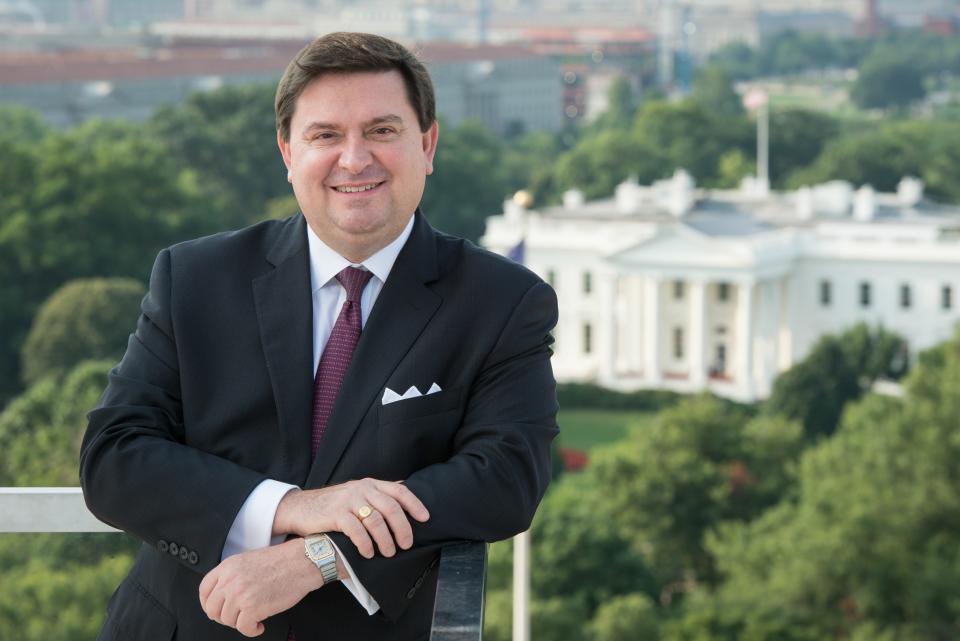Trump and Biden have one thing in common: Neither drinks. That's rare for presidents.
- Oops!Something went wrong.Please try again later.
- Oops!Something went wrong.Please try again later.
- Oops!Something went wrong.Please try again later.
105 years ago Tuesday the Constitution’s 18th Amendment was ratified, making Prohibition the law of the land. Alcohol’s role in our society has also made it part of presidential history − as a staple of White House life and entertainment, as a tool in shaping political images, as the subject of a momentous national experiment and as a source of personal struggle for many Americans, including several presidents.
Distilled and fermented spirits have been a feature of our national life since Colonial times, when people consumed more than twice as much as we do today. Farmers took beer or whiskey into their fields, ale was part of supper and many workplaces offered a swig as a mid-morning break. Military rations could include alcohol, likely safer than drinking water that might be contaminated.

American presidents have a tradition of serving liquor
When George Washington ran for the Colonial-era Virginia House of Burgesses, he partook in the 18th century custom of supplying voters with drinks − racking up a bill for more than 100 gallons of beer, wine, brandy, cider and punch. Later he distilled beer and whiskey at his Mount Vernon estate.
Thomas Jefferson began the tradition of lavish White House dinner parties with many courses of food and wine. Jefferson spent more than $80,000 a year in today’s dollars as he built a collection exceeding 20,000 bottles. He also worked to reduce import tariffs on European wine and grew grapes at Monticello.
This president almost played for NFL: American presidents' love of football runs deep
When the British burned the White House during the War of 1812, its brick wine cellar survived − though “a great quantity” of its wine was consumed by American troops, according to the White House Historical Association’s recent book "Wine and the White House."
Alcohol used as a status symbol and in political attacks
Alcohol became a symbol of lifestyle and social class − and a political weapon.
In 1840, Whigs, the opposition party working to unseat President Martin Van Buren, distributed a mechanical card showing him in aristocratic finery, smiling as he held a golden goblet of “White House champagne” with his initials inscribed on its side. (The country was still recovering from an economic panic that had closed many banks and triggered high unemployment.)
When a tab on the novelty campaign card was pulled, Van Buren’s champagne goblet was replaced by an “ugly mug of log cabin hard cider,” to promote the image of his challenger William Henry Harrison as a common man. Harrison won, even though it was Van Buren who had risen from poor beginnings and Harrison who was born into wealth.
The effort to limit alcohol use reaches the White House
Alcohol’s darker side and abstainers were also part of White House life, even in these early years. First ladies Abigail Adams and Dolley Madison each lost sons to alcoholism. Presidents Zachary Taylor and Millard Fillmore abstained, though alcohol was still served to guests.

It was first lady Lucy Webb Hayes, a teetotaler, who persuaded President Rutherford Hayes to stop serving alcoholic beverages at the White House during his term in the late 1870s. Politicians and reporters complained, and a White House steward reportedly slipped rum-laced punch to guests. But there was little public backlash, and “Lucy Hayes tea parties” sprung up among the growing national temperance movement (which helped spark the drive for women’s suffrage).
Though the first lady didn’t support Prohibition, the Woman’s Christian Temperance Union commissioned her portrait – posed next to a water fountain. (In later years, as the drive for Prohibition gained force, some dubbed Hayes “Lemonade Lucy.”)
18th Amendment: Prohibition becomes the law of the land
The temperance movement won its national battle by 1919, when the 18th Amendment banned "the manufacture, sale, or transportation of intoxicating liquors."
The new law impacted industries like California’s grape growers, who anointed 18-year-old Violet Oliver to tour the country talking up raisin consumption, raisin drinks and raisin recipes. When she called on President Woodrow Wilson at the White House in 1920, Oliver dubbed him “Knight of the Raisin.”
Decorating the White House: Those Christmas decorations don't magically appear. This is what it takes.
After he left office, Wilson had to get special approval from a Prohibition commissioner to bring his bottles back to his new residence.
President Warren Harding reportedly kept a bar at the White House stocked for regular poker nights.
Americans don't like Prohibition so drinks start to flow again
Although drinking and deaths from cirrhosis and alcoholism fell across America, violent black-market trafficking fueled a shift in public attitudes about Prohibition beginning in the 1920s. As President Herbert Hoover left a World Series game in Philadelphia, chants of “We want beer!” followed him off the field.
“Perhaps Philadelphia is tired of whiskey and gin,” wrote a newspaper columnist.
By the time Franklin Roosevelt was elected president, the country was ready to end its experiment, and the 18th Amendment was repealed in 1933. Light wines returned to state dinners.
As the Cold War bloomed after World War II, the White House fell into its own pitched battle − over wine allegiances. Dwight Eisenhower secretly swapped in American vintages to unsuspecting guests who thought they were drinking European varieties. The cosmopolitan Kennedys searched out the best European labels and began the tradition of three wine services (white, red and champagne) at state dinners.
President Lyndon Johnson reverted to American varieties. But President Richard Nixon reinstated continental wines (though he brought along a Napa Valley sparkling wine for a toast during his historic 1972 visit to China).

The White House wine war ended as a victory for the Americans, as Nixon was the last president to serve European wine at official dinners.
Although Ronald Reagan used lower-level ceremonies to finish off the European labels stocked by his predecessors, and Barack Obama served the first Chinese wine at a state dinner when President Xi Jinping visited (paired with an Oregon label), the modern White House has kept its focus on American vintages.
Obama becomes first president to brew beer in the White House
The Obama years brought another alcoholic first. In 2011 President Obama bought a home brewing kit, becoming the first chief executive to brew beer at the White House. “Beer really captures the spirit of coming together, of sitting down, of sharing human moments, friendship moments, bonding moments,” says Sam Kass, an Obama aide and chef who was part of the project.
To foster that kind of informality, Obama hosted a "beer summit" to break the ice when he sat down – under a magnolia tree near the Oval Office – with Harvard professor Henry Louis Gates Jr. and the police officer who had arrested Gates while investigating a report of a break-in at the professor's home.
Like many Americans, a number of presidents have struggled or been marked by trials with alcohol. Presidents Grover Cleveland, LBJ and Nixon reportedly drank to excess at times during their terms. George W. Bush and Ulysses Grant overcame their drinking habits by the time they reached the White House. Presidents Donald Trump and Joe Biden watched family members suffer from alcoholism. Both are teetotalers.
The simple sharing of any beverage can weaken suspicions and build connections, both personal and political. Unless Prohibition ever returns, alcohol will remain a part of life at the White House – be it dinner wine, punch at a reception, a quiet beer among adversaries or a carefully worded champagne toast to a foreign leader.

Stewart D. McLaurin is president of the White House Historical Association, a private nonprofit, nonpartisan organization founded by first lady Jacqueline Kennedy in 1961.
You can read diverse opinions from our Board of Contributors and other writers on the Opinion front page, on Twitter @usatodayopinion and in our daily Opinion newsletter.
This article originally appeared on USA TODAY: Doing Dry January? Imagine Prohibition. Here's what US presidents did

